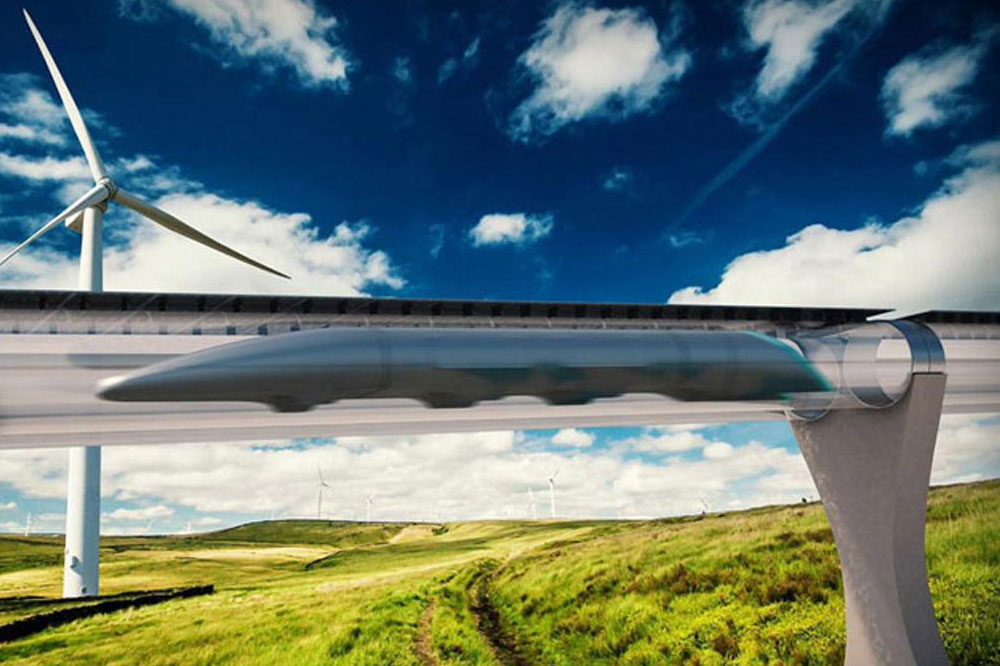Not content with turning our transportation electric and making space travel more affordable, Tesla and Space X CEO Elon Musk also has another pet project: the Hyperloop. A near-vacuum sealed tube-train design that could carry passengers across entire countries faster than airplane travel. The concept is still a long way from completion, but to get us that bit closer to a fully realised Hyperloop, the company set up to pursue that dream could start building a five mile test track in the coming weeks.

The Hyperloop puts a Maglev Bullet Train-style locomotive inside a near-vacuum, letting it hit unprecedented speeds
Although Musk was the main driver of this project from the start, he's taken a back seat as of late, with Hyperloop CEO Bibop Gabriele Gresta taking the helm. He recently announced at the Basestone Construct Disrupt event in London (via IBTimes) that the test track would begin construction next month and when completed would stretch for about five miles.
Passenger car tests would travel up to 160 miles per hour for safety purposes, but when unmanned the carriages will be pushed to a full 780 miles per hour. The project is currently slated to cost around $150 million, with international cooperation between firms, as well as private investment from individuals helping fund its creation.
If the testing phase of its operation goes as planned, more permanent pods will be created and used for transporting passengers and time sensitive packages at high speeds across Los Angeles to the San Francisco Bay Area. A full scale, cross country Hyperloop will then be conceptualised and potentially put into practice, allowing people to cross the entire United States in as little as 30 minutes.
Discuss on our Facebook page, HERE.
KitGuru Says: This makes total sense. As any Transport Tycoon player knows, planes are great for a while, but once you have the cash for infrastructure, high-speed train networks are the best way forward.
 KitGuru KitGuru.net – Tech News | Hardware News | Hardware Reviews | IOS | Mobile | Gaming | Graphics Cards
KitGuru KitGuru.net – Tech News | Hardware News | Hardware Reviews | IOS | Mobile | Gaming | Graphics Cards



the power costs for that system have to be mammoth, would love to see some figures on that.
No, power costs are projected to be negative. As in it will supply energy to the grid. The plan is to cover most of the loop in solar cells. Also the main point of the enclosed near vacuum tubes is to lower friction to reduce energy waste. This is potentially the most energy efficient way to transport people and goods over land ever invented.
generating and maintaining a vacuum, especially over such a large area, is very power hungry. i’ll believe it when i see it.
It isn’t going to be a vacuum. they need air as the train floats on an air pillow. They will lower the pressure though. I’m no specialist but it feels like it’s rather less expensive to lower the pressure than it is to achieve full vacuum.
It depends how good their sealant is…
We can make vaccume jars today that will be void of air untill the day they are smashed.
it just needs scalling up, and some work on inter-airlocks so passengers can get in without significant air leakage
As a Transport Tycoon player, i approve this.
If Maglev, it doesn’t need any air in the tube. But if any air is left in the tube, the vehicle would still have to contend with compressibility and supersonic affects, which is a factor air pressure and temperature. Maybe it is best to attempt a complete vacuum between cities and only have the station chambers cycle through.
Well as far as I understand it is not maglev. The magnets are used for propulsion not levitation. It uses a cushion of air to hover. Every concept drawing has a big fan in front to suck air and push it down under the train. They lower the pressure to decrease friction. Hyperloop isn’t meant to be supersonic.
While maglev will probably be the superior tech when it’s solved, the hyperloop can be built today.
Maglev certainly is the superior tech, Hyperloop’s system is much more complicated. Check out ET3, Jerry. http://www.et3.com
Here’s CEO Daryl Oster speaking at ReWrite http://rewrite.ca.com/us/articles/digital-transformation/invent-tomorrow-transportation.html